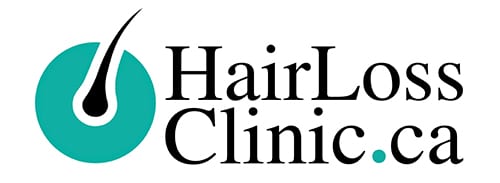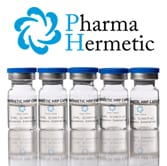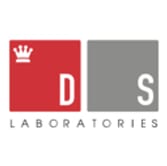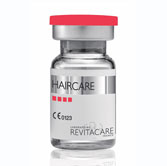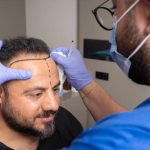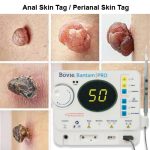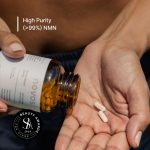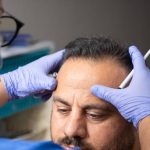
ALOPECIA AREATA | CAUSE & TREATMENT | HAIR LOSS CLINIC TORONTO
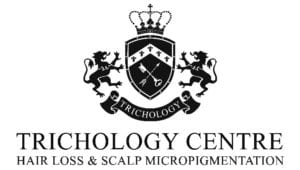
FREE ONLINE HAIR LOSS ASSESSMENT FORM
Are you experiencing any hair loss or scalp issues? Get a Certified Trichologist to assess and help treat your condition in Toronto and Greater Toronto Area. Please complete our online Trichology Assessment Form to get started now.
What is Alopecia Areata?
Alopecia areata is an autoimmune skin disease that causes hair to fall out in small coin sized patches. Commonly called spot baldness, it is a skin condition that causes hair loss from the scalp, face, and other parts of the body.
The condition can affect men and women, young and old, though most cases occur before the age of 30.
One in five people who has alopecia areata also has a family member who has experienced the same condition.
Alopecia areata occurs suddenly usually within a few days. Hair loss and hair regrowth can occur at the same time or different times in different parts of the body.
Hair loss on the scalp usually occurs on one side of the scalp instead of both sides.
If examined closely, hairs have an exclamation point look to them. (hairs narrower at the bottom).
People may experience a burning sensation, crawling sensation or itching on the scalp or body area before hair loss.
People with alopecia areata may also experience stripling (rows) or pitting (dents) on their fingernails.
Common types of Alopecia Areata are:
Alopecia areata patchy – The most common form of alopecia areata, with coin-sized hairless patches on the scalp.
Alopecia totalis- total baldness on the scalp.
Alopecia universalis – total hair loss on the entire body.
Alopecia barbae – form of alopecia areata that affects the beard.
What Causes alopecia areata?
Alopecia areata occurs when the body’s own immune system attacks the hair follicles, perceiving it as an invader, causing hair loss.
It is known as a polygenic disease. Unlike a single-gene disease, both parents must contribute several specific genes for the person to develop it. However, most scientists believe that it takes more than just genetics to cause the disease and other environmental factors also contribute to the cause of alopecia areata.
Possible contributors to alopecia areata
- Genetics
- Hair dressing habits
- Stress
- Vitamin deficiency
- Vaccination
- Viral infection
Treatment for alopecia areata
Although there is no cure for alopecia areata, some treatments may help with the condition and speed up hair regrowth.
A scalp biopsy or a blood test to test is recommended for signs of an infection or an underlying medical condition, including an autoimmune disorder.
With treatment, hair may regrow back faster, however hair loss may reoccur again. Several years may pass between recurrences. Hair may grow back fully or partially.
Prescription and nonprescription treatments are available for alopecia areata. Although there is no cure, some treatments may help with the condition. The odds of a positive outlook are higher the earlier you begin treatment for this condition. Medical prescription treatments may have unwanted side effects.
At the TRICHOLOGY CENTRE, we believe there are better alternatives for treating alopecia areata that don’t have the negative side effects associated with certain prescribed drugs. For those patients, who want to opt for a more natural course of treatment, please contact the Trichology Centre at 647-492-9093 for a hair and scalp consultation and learn more about our non-prescribed hair loss treatments.
Medical prescribed treatments for Alopecia Areata
Minoxidil (Rogaine)
Minoxidil is an antihypertensive vasodilator. It is commonly used to treat male pattern baldness. For best results, use this medication in conjunction with other therapies. Hair may begin to regrow within three months.
Side Effects: Side effects associated with Minoxidil include severe scalp irritation, unwanted growth of facial hair for women, chest pains and/or fast heartbeats, swelling in your hands and feet, flushing, headache, dizziness, confusion, unusual weight gain.
Corticosteroids
Corticosteroids helps stop the immune system from attacking healthy tissue. As a result, you may notice less hair loss. You may begin to regrow hair in affected areas.
Side Effects: Side effects of corticosteroids used on a long-term basis (longer than 3 months) include: osteoporosis, diabetes, hypertension, weight gain, thinning of the skin, bruising easily, increased vulnerability to infection, cataracts and glaucoma.
Diphencyprone (DPCP)
DPCP is a topical treatment helps stimulate hair follicles and promotes hair growth. It was designed to stimulate an allergic reaction, which prompts an increase in white blood cell count, stimulating hair growth.
Side Effects: Side effects associated with topical immunotherapy using DPCP include eczema, hyperpigmentation, hypopigmentation. Some patients may experience severe burning, itching, blistering or swelling of treated areas. As diphenylcyclopropenone is most often applied to the scalp, the reaction may make wearing headwear or wigs uncomfortable. Swollen lymph nodes may be noticeable behind the ears.
Tofacitinib (Xeljanz)
This new therapy, originally developed for rheumatoid arthritis, shows significant promise in treating the many forms of alopecia areata.
Side Effects: Severe stomach pain, yellowing of the skin or eyes, vomiting, clay-coloured stools, dark-coloured urine, pale skin, skin rash, shortness of breath.
Nonprescription Treatments for Alopecia Alopecia
Micronutrients
The role of diet and nutrition to help treat alopecia areata is growing. New evidenced-based recommendations that micronutrients including certain vitamins and minerals have shown positive results. Micronutrients can reduce oxidative stress, an increasingly suspected contributor to alopecia areata. Vitamin D have shown to help modify the immune response by inhibiting Th1 cell proliferation. Current literature has consistently demonstrated lower vitamin D levels in patients with alopecia areata.
Vitamin D – Vitamin D boosts immunity, keeps bones strong and skin healthy, stimulates cell growth, and helps create new hair follicles. Vitamin D deficiency has been linked to alopecia areata.
Biotin – Biotin is an important coenzyme for carboxylation reactions. Biotin deficiency has been shown to cause hair loss.
Zinc – Zinc is an essential mineral upon which hundreds of enzymes depend for their catalytic activity.
Iron or ferritin – Iron deficiency remains the most common nutritional deficiency in the world, a sign of which includes chronic diffuse telogen hair loss.
Vitamin A or retinoid or retinol – Vitamin A is an essential vitamin for hair follicles. It also helps skin glands make sebum. Sebum moisturizes the scalp and helps keep hair healthy.
Vitamin C – Vitamin C is a powerful antioxidant that helps protect against the oxidative stress caused by free radicals. It also helps your body absorb iron, a mineral necessary for hair growth.
Vitamin E – Like vitamin C, vitamin E is an antioxidant that can prevent oxidative stress. In one documented study, people with hair loss experienced a 34.5% increase in hair growth after supplementing with vitamin E for 8 months.
Magnesium – Magnesium acts as a cofactor for over 300 enzyme systems, and plays an important role in nucleotide synthesis, a frequent process in the rapidly dividing hair follicle.
Selenium – Selenium also contributes to antioxidant defense mechanisms via its interaction with the enzyme glutathione peroxidase.
Vitamin B12 or cobalamin – B12 contribute to nucleic acid production and thus possess an important role in the health of the hair follicles.
Folic acid or folate – Folic acid is primarily responsible for healthy cell growth including the cells in hair follicles.
Copper – copper acts with zinc in the antioxidant enzyme copper/zinc superoxide dismutase.
Adding certain vitamins and minerals can help promote hair growth and nurture the hair follicles and scalp. Speak with a certified Trichologist on the best dietary, vitamins and minerals to help you with alopecia areata.
Cosmetic solutions to alopecia areata
SMP Scalp Micropigmentation is a popular cosmetic solution for alopecia areata. If you condition persist and hair is not growing back fully, you may consider SMP to camouflage the bald spots. SMP, commonly known as hair tattoo, the technique of placing individual pigment tattoo to replicate the appearance of real hair follicles. For more information about scalp micropigmentation, please visit https://hairtattoo.ca.
Mesotherapy solutions for alopecia areata
Mesotherapy is a technique that uses micro needling of vitamins, enzymes, hormones, and plant extracts to rejuvenate the scalp and hair follicles.
AAPE®
AAPE® (Adipose-derived stem cells Protein Extracts) is a mixture of refined growth factors extracted from human adipose to promote hair growth and scalp health using outstanding ingredients approved by US FDA and CFDA. AAPE has been proven to be highly effective therapy for hair regeneration. For more information about AAPE visit Here
PHARMA HERMETIC HAIR RECOVERY PROGRAM®
Pharma Hermetic Hair Recovery Program® works at revitalizing the hair bulb and obtaining a greater thickness and strength. It helps strengthen the anchorage of the root and rebalance the scalp.
In addition, the Hair Recovery Program® SP55, enhance the growth of new hair and activates dormant follicles thanks to its effective active ingredients. Providing all the necessary nutrients to repair the weakened and brittle hair. After the treatment, the hair becomes thicker and more voluminous.
We rely on ingredients suitable to penetrate the scalp and stop hair loss.
- Thicker hair.
- More density.
- No side effect.
- Topical application.
- Lasting results.
NOURKRIN® MAN AND WOMAN HAIR LOSS
If you’re worried about certain hair loss medications that contain ingredients that may cause some side effects such as Minoxidil, we offer a hair loss treatment called Nourkrin®. Nourkrin® contains natural ingredients and has been clinically proven to help thinning hair. The key active ingredients are marine-based extracts of proteins and polysaccharides that have been combined with silica, vitamin C, and horsetail extract. Developed by scientists in Finland, Nourkrin® has been the subject of many double blind, placebo-controlled clinical studies, the latest of which showed that 77% of all participants reported a positive effect during a six-month treatment period and their hair count increased by an average of 35.7%.
THERADOME® LASER HAIR THERAPY
The Theradome® brings you the world’s most advanced laser hair growth treatment to enjoy from the comfort of your own home. Unlike Light Emitting Diodes (LEDs) devices, our laser light targets the stem cells at the base of hair follicles. This allows the formation of a new photonic pathway that can restore hair to a healthy state. Theradome® one-of-a-kind laser hair helmet was engineered based on four crucial scientific criteria, which together provide the most powerful and efficacious laser hair growth treatment available. For more information about Theradome®, please visit: https://laserhairtherapy.ca.

FIND A TRICHOLOGIST IN TORONTO GTA
With the numerous available treatments for alopecia areata our Trichologist can recommend the best treatment that can help with this hair loss condition. At Trichology Centre, we have helped patients with alopecia areata, advising them the best treatments available and helping them regain their confidence and self-esteem. Early assessment and treatment from the onset of hair loss is important and can help prevent the condition to worsen.
We have two clinics in the Toronto GTA,
TRICHOLOGY CENTRE | hairlossclinic.ca | hairtattoo.ca | laserhairtherapy.ca
600 Sherbourne St #605, Toronto
9140 Leslie St, Richmond Hill
Please give us a call at 647-492-9093
Q & A
What is alopecia areata?
Alopecia areata is an autoimmune disorder characterized by unpredictable hair loss on the scalp and other body parts due to the immune system mistakenly attacking hair follicles.
What causes alopecia areata?
The specific origins of alopecia areata are not entirely elucidated, but it is hypothesized to stem from a complex interplay of genetic predisposition, environmental factors, and abnormal immune response.
How prevalent is alopecia areata?
Alopecia areata is relatively common, affecting approximately 2% of the global population.
What are the clinical manifestations of alopecia areata?
The primary clinical presentation of alopecia areata involves the abrupt appearance of circular or oval-shaped areas of hair loss on the scalp, with the potential to advance to complete scalp baldness (alopecia totalis) or widespread hair loss across the body (alopecia universalis).
Does alopecia areata only affect the scalp?
No, alopecia areata can affect any hair-bearing area of the body, including the eyebrows, eyelashes, beard, and other body hair.
Can alopecia areata lead to permanent hair loss?
While many cases of alopecia areata experience spontaneous hair regrowth within a year, in some individuals, it can progress to more severe forms, such as alopecia totalis or alopecia universalis, resulting in permanent hair loss. However, even in severe cases, hair regrowth is still possible.
Are there any associated medical conditions with alopecia areata?
People affected by alopecia areata may face a heightened likelihood of developing additional autoimmune conditions, including thyroid disorders, vitiligo, and atopic dermatitis.
How is alopecia areata diagnosed?
Alopecia areata is primarily diagnosed based on the characteristic appearance of patchy hair loss. In some cases, a scalp biopsy or blood tests may be performed to rule out other causes and confirm the autoimmune nature of the condition.
What treatment options are available for alopecia areata?
Treatment options for alopecia areata include topical corticosteroids, intralesional corticosteroid injections, topical minoxidil, immunotherapy, and systemic therapies such as oral corticosteroids or JAK inhibitors. However, treatment outcomes vary, and there is currently no definitive cure.
Can stress trigger or worsen alopecia areata?
While stress does not directly cause alopecia areata, it is believed to be a triggering or exacerbating factor in susceptible individuals. Stress management techniques and psychological support may be beneficial as part of the overall treatment approach.
Can alopecia areata affect people of all ages?
Yes, alopecia areata can occur at any age, affecting children, adolescents, and adults. However, onset during childhood or early adulthood is more common.
Does alopecia areata impact an individual’s overall health?
Alopecia areata primarily affects the hair follicles and does not cause significant physical health problems. However, the psychosocial impact of hair loss can affect an individual’s emotional well-being and quality of life.
Are there any preventive measures for alopecia areata?
Since the exact cause of alopecia areata is unknown, no specific preventive measures are available. However, early detection and prompt treatment may help in managing the condition and reducing the extent of hair loss.
What is the prognosis for individuals with alopecia areata?
The prognosis for alopecia areata varies among individuals. Hair regrowth often occurs spontaneously within a year, even without treatment. However, the course of alopecia areata is unpredictable, and some individuals may experience recurrent episodes of hair loss or progress to more severe forms of the condition.
Can individuals with alopecia areata lead a normal life?
While alopecia areata does not affect an individual’s overall physical health, the psychosocial impact of hair loss can be significant. It may cause emotional distress, lower self-esteem, and affect interpersonal relationships. Support groups, counselling, and interventions focused on coping strategies can help individuals manage the emotional and social challenges associated with alopecia areata, allowing them to lead fulfilling lives.
ADDRESS
Toronto, 225 Wellesley St East #5
Richmond Hill, 9140 Leslie St #301
PHONE
(647) 492-9093
hairlossclinic.ca@gmail.com
WORKING HOURS
Mon-Sat 10:30 am - 8:00 pm
Sunday CLOSED
Comments are closed.
